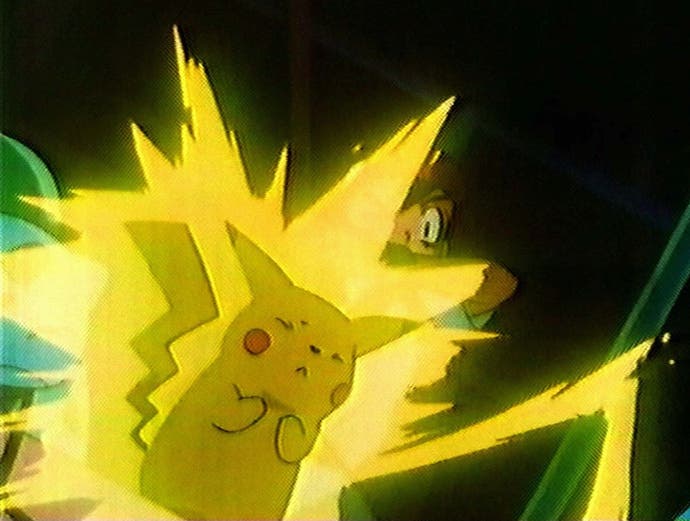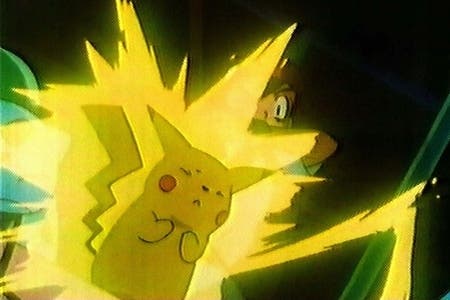How Pokemon inspired the US military to devise a seizure gun
Take that! And that!
With all the hullabaloo over whether or not games cause violent behaviour, we can say at the very least that they can inspire TV shows that in turn inspire silly government militaries to develop weapons. No, really.
In 1997 an episode of the Pokemon cartoon triggered hundred of seizures in about 700 viewers prone to epileptic fits. This inspired the US military to develop a gun that would simulate Pikachu's flickering exploits, only on a more dangerous scale to encompass even those without epilepsy.
According to a report at Wired, a 1998 secret Army intelligence analysis dreamed up the idea of a seizure gun that would blast its users foes with electromagnetic energy until their brains would overload and they'd convulse.

Essentially, the device would use "electromagnetic pulses" to cause one's neurons to all fire at once, causing a "disruption of voluntary muscle control," according to a description of the proposed weapon in a declassified document from the Army's National Ground Intelligence Center.
"It is thought by using a method that would actually trigger nerve synapses directly with an electrical field, essentially 100 per cent of individuals would be susceptible to seizure induction."
The seizures would be caused by specific electrical stimuli triggered through the optic nerve. "The onset of synchony and disruption of muscular control is said to be near instantaneous," read the 1997 Army report that noted victims would be susceptible to its effects from distances of "up to hundreds of meters."
It also said "[r]ecovery times are expected to be consistent with, or more rapid than, that which is observed in epileptic seizures." The analysis noted that a grand-mal seizure generally lasts between one and five minutes, but the weapon could be "tunable with regard to type and degree of bodily influence."
Incredibly, the document actually cited Pokemon as its inspiration. "The photic-induced seizure phenomenon was borne out demonstrably on December 16, 1997 on Japanese television when hundreds of viewers of a popular cartoon were treated, inadvertently, to photic seizure induction," it read.
Ostensibly the research into this weapon never went anywhere. The analysis stated "No experimental evidence is available for this concept," and the result of incapacitating a human nervous system with an electromagnetic pulse "has not been tested."
When asked by Wired's Danger Room if the Joint Non-Lethal Weapons Directorate - the command overseeing the Pentagon's non-lethal weapons division - had ever explored developing an EMP seizure ray, spokeswoman Kelley Hughes bluntly replied "No."
Of course, who wants to admit to developing weapons based on a kid's cartoon?









